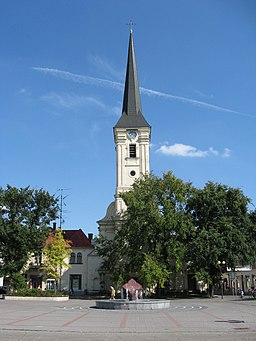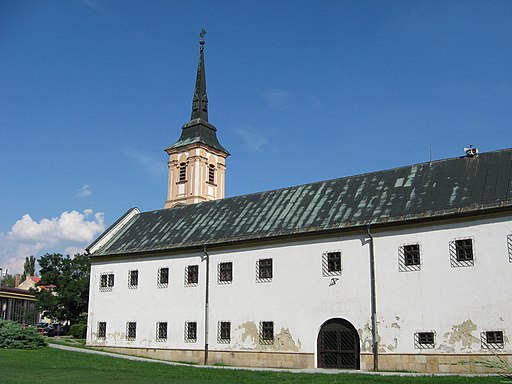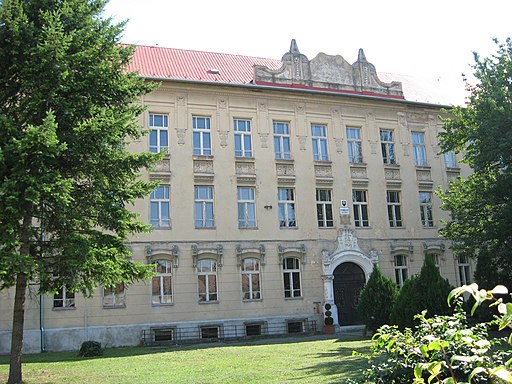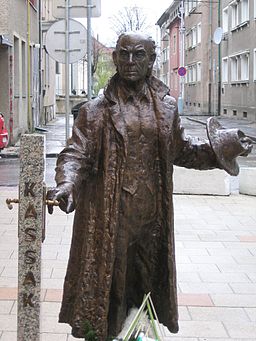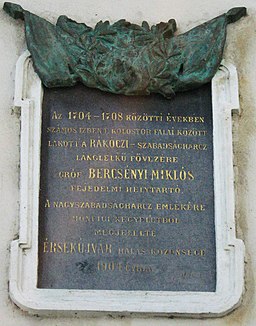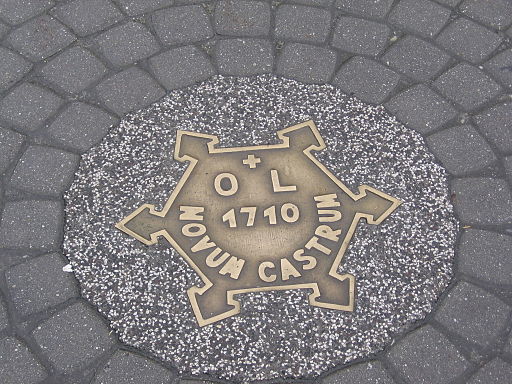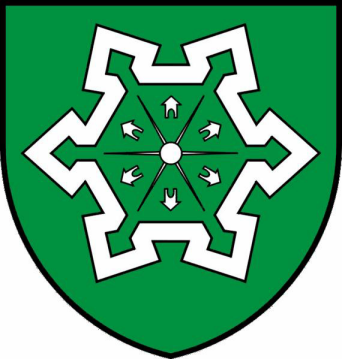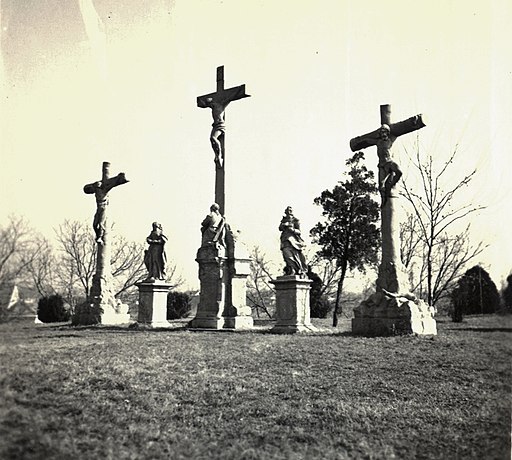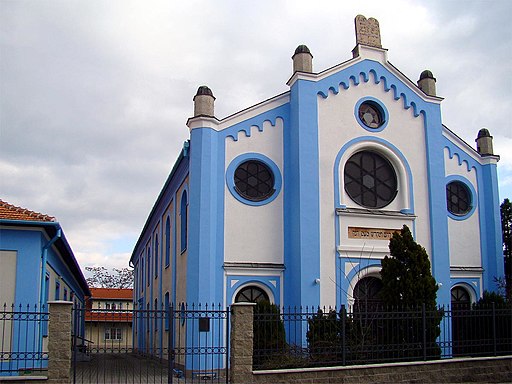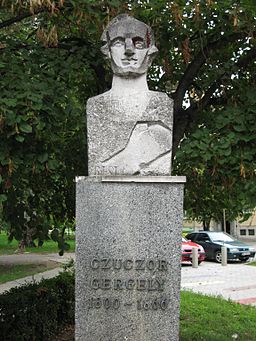895
Arrival of the Hungarians
Little more...
895
The alliance of the seven Hungarian tribes took possession of the then largely uninhabited Carpathian Basin. Until then, the sparse Slavic population of the north-western Carpathians had lived under Moravian rule for a few decades after the collapse of the Avar Khaganate in the early 9th century.
1000
Foundation of the Hungarian Kingdom
Little more...
1000
The Kingdom of Hungary was established with the coronation of King Stephen I. He converted the Hungarians to Christianity and created two archdioceses (Esztergom and Kalocsa) and ten dioceses. He divided Hungary into counties led by ispáns, who were appointed by the king.
1526
Battle of Mohács and the splitting of Hungary into two parts
Little more...
1526
Sultan Suleiman I launched a war against Vienna, instigated by the French. Ferdinand I, Duke of Austria, was the brother-in-law of King Louis II of Hungary. The army of the Ottoman Empire defeated the much smaller Hungarian army at Mohács, and King Louis II died in the battle. A group of the barons elected Ferdinand I of the House of Habsburg to the throne, who promised to defend Hungary from the Turks. He was the younger brother of the most powerful European monarch Emperor Charles V. But the nobility chose the most powerful Hungarian baron, Szapolyai János, who was also crowned as King John I. The country was split in two and a decades-long struggle for power began.
1541
The Turkish occupation of the capital, Buda, and the division of Hungary into three parts
Little more...
1541
The Turks conquered Buda, the capital of Hungary, after the death of King John I. The central part of the country was under Turkish rule for 150 years. The western and northern parts (including present-day Slovakia) formed the Kingdom of Hungary ruled by the Habsburg emperors. The eastern parts (now mainly under Romanian rule) were ruled by the successors of King John I of Hungary, who later established the Principality of Transylvania.
1545-1546
Várdai Pál, Archbishop of Esztergom constructed a wooden palisade with four bastions on the left bank of the Nyitra river to protect his lands.
between 1553-1568
Oláh Miklós, Archbishop of Esztergom reinforced the castle. It was called Castrum Novum. The common Hungarian name was Oláhújvár (Oláh New Castle), referring to the name of the archbishop.
1570
The establishment of the Principality of Transylvania
Little more...
1570
John II (John Sigismund), the son of King John I of Hungary, renounced the title of King of Hungary in favor of King Maximilian of the House of Habsburg, and henceforth held the title of Prince. This formally created the Principality of Transylvania, which was the eastern half of Hungary not ruled by the Habsburgs and was also a vassal of the Ottoman Empire. John II died in 1571, after which the three nations of Transylvania (the Hungarian nobility, the Székelys and the Saxons) elected the prince.
July 7, 1571
The War Council of Vienna decided to build a new fort on the right bank of river Nyitra, because the old one was obsolete and impossible to protect.
1573-1580
The construction of the new fort. The construction was managed by Zserotin Frigyes based on the plans of the Italian architects Ottavio és Giulio Baldigara. The hexagonal fort incorporated an entire town with rectangular street system. It was one of the most modern forts of the era.
October 2, 1580
The fort was inaugurated. Forgách Simon became the Captain of Érsekújvár.
1584-1585
A Catholic parish church and a school was built.
1604-1606
Uprising of Bocskai István
Little more...
1604-1606
The alliance of the Habsburgs and the Principality of Transylvania was defeated by the Ottoman Empire in the Fifteen Years' War. The war devastated Transylvania, which was occupied by the Habsburg imperial army, and General Basta introduced a reign of terror. The nobility and the burghers were upset about the terror, the plundering mercenaries and the violent Counter-Reformation. Bocskai István decided to lead their uprising after the Habsburg emperor tried to confiscate his estates. Bocskai also rallied the hajdú warriors to his side. He was elected Prince of Transylvania and soon liberated the Kingdom of Hungary from the Habsburgs. In 1605 Bocskai István was crowned King of Hungary with the crown he received from the Turks.
late 16th century
A Reformed church was built, which was the largest church in the town.
October 17, 1605
After several months of siege, Érsekújvár surrendered to the army of Bocskai István. It was due to a secret agreement between High Prince Matthew and Illésházy István that the fort surrendered to Homonnai Drugeth Bálint, the commander of Bocskai István. They wanted to prevent the Turks, who helped Bocskai in the siege, from capturing the important fort. The Hungarians did not let the Turks into the fort, after they took it over from the Imperials.
23 June 1606
Peace of Vienna
Little more...
23 June 1606
Bocski István made peace with Emperor Rudolf. Their agreement secured the constitutional rights of the Estates of Hungary, and the freedom of religion. The counties of Szatmár, Bereg and Ugocsa were annexed to the Principality of Transylvania. Bocskai died of illness in the same year, leaving to his successors the idea of unifying Hungary from Transylvania.
1606
According to the Peace of Vienna that ended the Bocskai-uprising, the Imperials got Érsekújvár back.
1619
The campaign of Prince Bethlen Gábor of Transylvania in the Thirty Years' War
Little more...
1619
At the beginning of the Thirty Years' War (1618-1648), Prince Bethlen Gábor of Transylvania went to war against the Habsburg emperor as an ally of the rebelling Czech-Moravian-Austrian estates. The whole Kingdom of Hungary joined him, only the Austrian defenders of Pozsony had to be put to the sword. With his allies, he laid siege to Vienna. However, he was forced to abandon the siege because the Habsburg-loyal Hungarian aristocrat Homonnai Drugeth György attacked his heartland with Polish mercenaries. On 25 August 1620, the Diet of Besztercebánya elected Bethlen Gábor King of Hungary as vassal of the Turks. He continued to fight after the defeat of the Czechs at White Mountain on 8 November 1620, but without real chance to achieve decisive victory, he decided to come to an agreement with Emperor Ferdinand II.
September 1619
The fort peacefully surrendered to Prince Bethlen Gábor of Transylvania.
May 29 - July 21, 1621
The Imperial siege of Érsekújvár. The army sent by Prince Bethlen to liberate the fort arrived on the 13th of June. Thurzó Szaniszló successfully defended the fort. The Imperial commander Buquoi died in the fights.
31 December 1621
Peace of Nikolsburg
Little more...
31 December 1621
Prince Bethlen Gábor of Transylvania made peace with Emperor Ferdinand II. Their agreement secured the constitutional rights of the Estates of Hungary, and later it was supplemented with the freedom of religion. Bethlen renounced the title of King of Hungary in exchange for seven counties of the Upper Tisza region (Szabolcs, Szatmár, Bereg, Ugocsa, Zemplén, Borsod, Abaúj) for the rest of his life, other estates in Hungary as his private property and the imperial title of Duke of Oppeln and Ratibor (Opole and Racibórz), one of the Duchies of Silesia. Prince Bethlen went to war against the Habsburgs in 1623 and 1626, but was unable to negotiate more favourable terms.
1621
According to the Peace of Nikolsburg the town returned to the emperor, Ferdinand II.
17th century
A Reformed collage was opened.
1620s
Pázmány Péter, Archbishop of Esztergom constructed the Archbishop's Palace and invited Franciscan monks to the town.
May 24, 1631
Archbishop Pázmány Péter consecrated a Franciscan church and a monastery.
1652
At Nagyvezekény Forgách Ádám, Captain of Érsekújvár, defeated an army of 4,000 Turks with his 1,300 men and freed 150 captives.
August 4, 1663
Two messengers brought fake news to Captain Forgách Ádám about the Turkish army having been split into two parts by the flood that swept away the pontoon bridge at Párkány. The Captain, in order to take advantage of the situation, marched out with 5,000 men to attack the Turks.
August 6, 1663
At Köbölkút, the Hungarians suffered a complete defeat from Köprülü Ahmed's Turkish army of 20-25 thousand soldiers (4 or 5 times larger than the Hungarian army).
August 18, 1663
The Turks besieged the fort. The Turkish army mounted to 100-120 thousand after the Tatar, Cossack, Moldavian and Wallachian auxiliary troops arrived.
September 22, 1663
The wall collapsed at the Frigyes (Frederik) bastion.
September 24, 1663
The defenders of Érsekújvár surrendered in exchange for free retreat. The neighborhood was left unprotected and the Turks caused large destruction. Soon after, the town of Nyitra fell to the enemy.
October 9, 1683
The army of the Holy League defeated the Turks at Párkány.
October 28, 1683
After four days of siege Esztergom surrendered to the army of the Holy League. Érsekújvár was left without supply.
July 7, 1685
The main army of Charles V, Duke of Lorraine arrived under Érsekújvár, which had already been encircled by Heister.
August 16, 1685
Charles V, Duke of Lorraine, defeated the Turkish army that was supposed to liberate Érsekújvár of the siege next to the village of Tát.
August 19, 1685
Érsekújvár was occupied by the Imperials with one last attack.
1686
Recapture of Buda and the liberation of Hungary from the Turks
Little more...
1686
The army of the Holy League recaptured Buda from the Turks by siege. In 1687, the Imperial army invaded the Principality of Transylvania. The liberation was hindered by the French breaking their promise of peace in 1688 and attacking the Habsburg Empire. By 1699, when the Peace of Karlóca was signed, all of Hungary and Croatia had been liberated from the Ottoman Empire with the exception of Temesköz, the area bounded by the Maros, the Tisza and the Danube rivers. It was not until the Peace of Požarevac in 1718 that Temesköz was liberated from the Turks. However, the continuous war against the Turkish invaders and the Habsburg autocracy, which lasted for more than 150 years, wiped out large areas of the Hungarian population, which had previously made up 80% of the country's population, and was replaced by Vlachs (Romanians), Serbs and other Slavic settlers and Germans. The Habsburgs also favoured the settlement of these foreign peoples over the 'rebellious' Hungarians.
1691
Emperor Leopold I gave back the town to Széchényi György, Archbishop of Esztergom in return for 10 thousand florins. The archbishop granted the settlement town status.
1703-1711
Hungarian War of Independence led by Prince Rákóczi Ferenc II
Little more...
1703-1711
After the expulsion of the Turks, the Habsburgs treated Hungary as a newly conquered province and did not respect its constitution. The serfs rose up against the Habsburg ruler because of the sufferings caused by the war and the heavy burdens, and they invited Rákóczi Ferenc II to lead them. Trusting in the help promised by King Louis XIV of France, he accepted. Rákóczi rallied the nobility to his side, and soon most of the country was under his control. The rebels were called the kurucs. In 1704, the French and the Bavarians were defeated at the Battle of Blenheim, depriving the Hungarians of their international allies. The Rusyn, Slovak and Vlach peasants and the Saxons of Szepes supported the fight for freedom, while the Serbs in the south and the Saxons in Transylvania served the Habsburgs. Due to lack of funds Rákóczi could not raise a strong regular army, and in 1710, Hungary was also hit by a severe plague. Rákóczi tried unsuccessfully to forge an alliance with Tsar Peter the Great of Russia. In his absence, without his knowledge, his commander-in-chief, Károlyi Sándor, accepted Emperor Joseph I's peace offer. The Peace of Szatmár formally restored the Hungarian constitution and religious freedom and granted amnesty, but did not ease the burden of serfdom. Rákóczi refused to accept the pardon and went into exile. He died in Rodosto, Turkey.
November 16, 1704
Érsekújvár was occupied by the kuruc insurgents without a fight.
May 20, 1706
Prince Rákóczi Ferenc II signed the truce with the Imperials in Érsekújvár. A few issues of the kuruc war newspaper, the Mercurius Veridicus ("Truth telling Mercur”) was published here.
1708
Heister started to fire at the town, but he could not occupy it. The kuruc commander Ocskay László switched to the Imperials.
January 3, 1710
The kuruc insurgents caught the traitor Ocskay during a raid, and executed him on the main square of Érsekújvár.
September 14, 1710
The Imperials besieged the town.
September 23, 1710
The Imperials occupied the town.
1724-25
The fortifications were demolished at the order of Emperor Charles II.
1848-1849
Hungarian Revolution and War of Independence
Little more...
1848-1849
Following the news of the Paris Revolution on 22 February 1848, the Hungarian liberal opposition led by Kossuth Lajos demanded the abolition of serfdom, the abolition of the tax exemption of the nobility, a parliament elected by the people, and an independent and accountable national government. The revolution that broke out in Pest on 15 March expressed its demands in 12 points, which, in addition to the above mentioned, included the freedom of the press, equality before the law, the release of the political prisoners and the union with Transylvania. A Hungarian government was formed, Batthyány Lajos became prime minister, and on 11 April Emperor Ferdinand V ratified the reform laws. On August 31 the Emperor demanded the repeal of the laws threatening with military intervention. In September the Emperor unleashed the army of Jelacic, Ban of Croatia, on Hungary, but they were defeated by the Hungarians in the Battle of Pákozd on 29 September. An open war began for the independence of Hungary. The Habsburgs incited the nationalities against the Hungarians. The Rusyns, the Slovenes and most of the Slovaks and Germans supported the cause persistently, but the Vlachs (Romanians) and the Serbians turned against the Hungarians. The glorious Spring Campaign in 1849 led by General Görgei Artúr liberated almost all of Hungary. On 1 May 1849, Emperor Franz Joseph, effectively admitting defeat, asked for the help of Tsar Nicholas I of Russia, who sent an intervention army of 200,000 soldiers against Hungary. The resistance became hopeless against the overwhelming enemy forces and on 13 August Görgei Artúr surrendered to the Russians at Világos. Bloody reprisals followed, and on 6 October 1849, 12 generals and a colonel of the Hungarian Revolution, the martyrs of Arad, were executed in Arad. On the same day, Batthyány Lajos, the first Hungarian Prime Minister, was executed by firing squad in Pest. The Habsburgs introduced total authoritarianism in Hungary, but they also failed to fulfil their promises to the nationalities that had betrayed the Hungarians.
1848
The revolution and war of independence ended the archbishop's control over the town.
1851
The town got railway connection on the Budapest–Érsekújvár–Pozsony–Marchegg line. It was the most important railway line in Hungary because it connected Budapest to Vienna.
1867
Austro-Hungarian Compromise
Little more...
1867
The Habsburg Empire was weakened by the defeats it suffered in the implementation of Italian and German unity. The Hungarians wanted to return to the reform laws of 1848, but they did not have the strength to do so. Emperor Franz Joseph and the Hungarian opposition, led by Deák Ferenc, finally agreed to restructure the Empire and abolish absolutism. Hungary was given autonomy in its internal affairs, with its own government and parliament, which was essential for the development of its economy and culture. However, foreign and military affairs remained in the hands of the Habsburgs and served their aspiration for becoming a great power. The majority wanted Hungary's independence, but they were excluded from political power.
1889
Brick factory was established.
1900
A tannery was established, which produced shoes as well from 1904.
1902
Gasworks were established.
1906
A flax processor was built.
1914-1918
World War I
Little more...
1914-1918
As part of the Austro-Hungarian Monarchy, Hungary took part in the war on the side of the Central Powers.
November 1918 - January 1919
The Czech, Romanian and Serbian occupation of Hungary
Little more...
November 1918 - January 1919
In Hungary, the freemasonic subversion brought the pro-Entente Károlyi Mihály to power. The new government, naively trusting the Entente powers, met all their demands and disbanded the Hungarian military, which rendered the country completely defenseless in the most dire need. Under French and Italian command, Czech, Romanian and Serbian troops invaded large parts of Hungary, where they immediately began the takeover. They fired Hungarian railway workers, officials and teachers, banned the use of the Hungarian language, abolished Hungarian education, and disposed of everything that reminded them of the country's Hungarian past. Hundreds of thousands of Hungarians were forced to leave their homeland, and the forcible assimilation of the remaining Hungarians was begun.
January 8, 1919
The Czechoslovaks invaded Érsekújvár.
21 March - 1 August 1919
Communist takeover and the Northern Campaign
Little more...
21 March - 1 August 1919
After the Entente put vast areas with a Hungarian population under foreign administration, the pro-Entente government resigned and the traitorous Prime Minister Károlyi Mihály handed over power to the communists, who had little support anyway. They raised the Hungarian Red Army, which liberated large parts of northern Hungary from Czech occupation in the 'Northern Campaign'. The aim was to unite with the Russian Red Army, which ultimately failed because of the Russians' defeat. French Prime Minister Clemenceau promised the Jewish Kun Béla that he would recognise the Hungarian Soviet Republic and invite it to the peace conference if it would call back the army from northern Hungary. Calling back the army demoralized the soldiers, who fought for their homeland and not for communism. Clemenceau broke his promise and let the Romanian horde cross the Tisza River and capture Budapest.
June 3, 1919
The army of the Hungarian Soviet Republic liberated Érsekújvár from the Czechoslovak invaders.
June 19-20, 1919
The Czechoslovaks invaded the Hungarian town again.
4 June 1920
Trianon Dictate
Little more...
4 June 1920
Hungary was forced to sign the Treaty of Trianon, although the country was not invited to the peace talks. Hungary lost two thirds of its territory that had belonged to it for more than 1000 years. One-third of the Hungarian population came under foreign rule. On the basis of the national principle, countries with a more mixed and less ethnically balanced composition than the former Hungary were created, such as Czechoslovakia and the Kingdom of Serbs, Croats and Slovenes (later Yugoslavia). For example, while 48% of the population of the territory ceded to Czechoslovakia was Slovak and 30% Hungarian, 54% of the population of the former Hungary was Hungarian and 10.6% Slovak. And in the territory that is now part of Serbia, the Hungarians outnumbered the Serbs. The part of the territory allocated to Romania from Hungary was larger than the remaining territory of Hungary, despite the fact that there were 10 million Hungarians and less than 3 million Romanians in the former Hungary. While Hungary used to have the most liberal nationality policy in Europe, the successor states had no respect at all for the national and cultural rights of the indigenous Hungarians and engaged in forced assimilation. The Trianon Dictate destroyed the organic economic unity of the region. Before the First World War, Hungary had a dynamic economy, more advanced than Spain's. After 1920, the successor states formed the so-called "Little Entente", putting Hungary under an economic blockade and sabotaging it on the international stage.
2 November 1938
First Vienna Award
Little more...
2 November 1938
Under the First Vienna Award, Hungary regained 11,927 km2 of territory from Czechoslovakia. Its population was 869 thousand people, 86.5% of whom were Hungarian. France and Great Britain did not take part in the decision taken by Germany and Italy, citing disinterest, but acknowledged its validity.
November 2, 1938
Érsekújvár returned to Hungary according to the First Vienna Award.
November 8, 1938
The Hungarian army marched into Érsekújvár according to the First Vienna Award.
October 7, 14, 1944
British-American bombing.
March 14, 1945
British-American bombing. Two thirds of the town was destroyed together with most of the historic buildings. 4,000 innocent people were killed.
Autumn 1944 - Spring 1945
Soviet occupation
Little more...
Autumn 1944 - Spring 1945
The Soviet Red Army occupied Hungary and Slovakia, which resulted in the recreation of Czechoslovakia.
March 29, 1945
The Soviets invaded Érsekújvár.
5 April 1945
Beneš decrees and the persecution of Hungarians
Little more...
5 April 1945
In Hungarian-majority Kassa, the president of occupying Czechoslovakia, Edvard Beneš, promulgated his government program, the so-called Beneš decrees. As part of this, the Hungarian population was deprived of their rights. Their complete expulsion was planned, with the support of the Soviet Union, and only the veto of the USA prevented it. Under the 'Reslavakization' programme, only those Hungarians who recognised themselves as Slovaks were allowed to regain their rights, thus renouncing all linguistic and cultural rights. In the violent expulsions that followed, nearly 200,000 Hungarians were deprived of their property and expelled from their homeland on the basis of their nationality.
1945
One of many internment camps where the Czechoslovaks gathered the native Hungarians they wanted to expel because of their nationality operated in Érsekújvár.
1946
The Archbishop's Palace, which was only slightly damaged in the bombings, was demolished by the Czechoslovaks.
1947
Paris Dictate
Little more...
1947
The Paris Dictate, in accordance with Soviet interests, did not recognise the just territorial revisions made by the two Vienna decisions and handed the reclaimed Hungarian-majority territories back to Czechoslovakia, Romania and Yugoslavia, where the Hungarians were subjected to severe atrocities, expulsions and deprivation of rights. It also seceded three more villages south of Pozsony from Hungary to Czechoslovakia.
1947-48
The remaining Hungarian population was expelled, Slovaks flooded the town.
1 January 1993
Dissolution of Czechoslovakia
Little more...
1 January 1993
Czechoslovakia disintegrated due to ethnic differences between Czechs and Slovaks, shortly after the withdrawal of Soviet tanks. Slovakia was formed entirely from territory carved out of historic Hungary, and Slovak national identity is still largely based on falsified history and artificial hatred of Hungarians. Despite deportations, expulsions, forced assimilation and strong economic pressure, there are still nearly half a million Hungarians living in the country.
